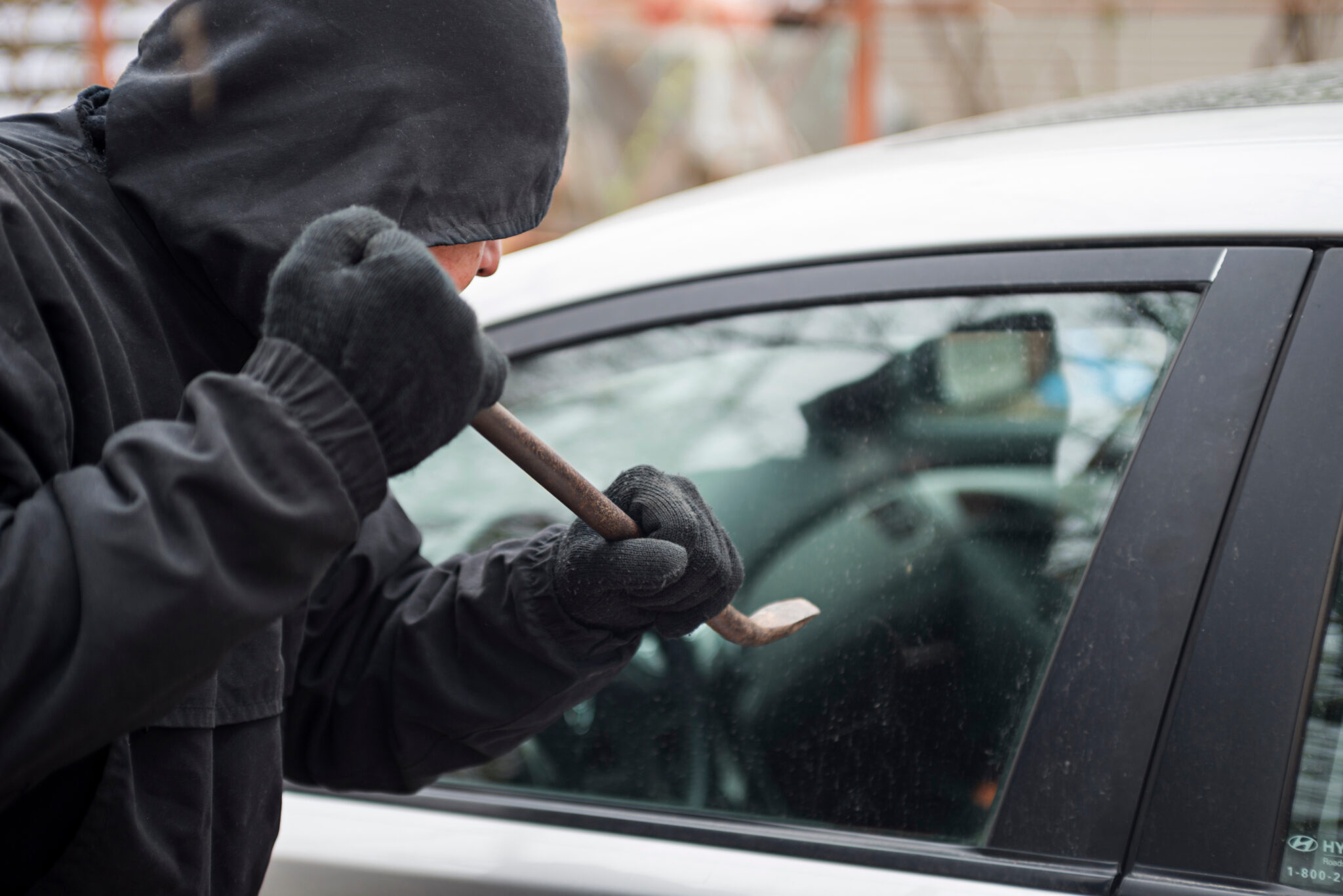What would you do if the worst happened? You leave your house for work, seeing that someone has broken into your car. Unfortunately, car prowls and burglary is one of the most common crimes in America. California alone reported over 243,000 vehicle burglaries in 2018.
If your vehicle has been broken into by a thief or you worry about what to do if it does, this article is for you. Insurance pays for damage or theft of your car, but what about the things inside? We’ll break down what to do after a burglary and whether your auto policy covers losses.
Does My Auto Insurance Cover in a Break-in?
If someone breaks into your vehicle, there will be some damage. The thief might have broken one of your windows. Or they may have taken a screwdriver to your lock to get inside.
You might also discover that crooks have made off with part of your car. Catalytic converters are expensive and a popular target for thieves. These situations and damages are all covered by your comprehensive insurance, including if someone steals your vehicle.
Below is a partial list of what comprehensive covers:
- Broken locks
- Interference with ignition
- Theft of the car (the insurer will cover the vehicle’s value)
- Cosmetic damage (upholstery, paint, locks)
- Airbags
- Broken or damaged windows
- Damage or theft of stock/aftermarket equipment (GPS, stereo, radio, wheels, catalytic converter)
- Damaged glove box
Homeowners and Renters Insurance Cover the Rest
Comprehensive coverage pays to fix damages to your car from a break-in, such as a broken locking mechanism or shattered window. Auto insurance does not cover the loss of items left inside your vehicle. Luckily, your personal possessions are covered from theft if you have a homeowners or renters policy.
Both homeowners and renters cover the items in your car. Below are a few covered examples:
- Laptop computers
- Cell phones
- Tools
- Video equipment
- Clothes, glasses, and jewelry
- Bag, purse, or wallet
- DVDs and CDs
- Sports gear
This is only a partial list. Make sure to check with your insurance company if you’re unsure about a specific item.
Steps to Take After a Break-In
One of the worst parts about vehicle break-ins is not knowing what to do once you’re a victim. Below are some of the most important steps you can take after a car burglary:
- Call the police
- Figure out exactly what was in the car
- Take pictures (handy if there are damages)
- Get in contact with your insurance company
- Come up with proof that you own your belongings
- Cancel credit/debit cards to avoid fraudulent purchases
- Deactivate your phone
- Turn in a complete police report
Tips on Avoiding a Break-In
It isn’t possible to completely protect your car from a break-in. However, there are several ways you can minimize risk. Some of these include:
- Park your car in a garage when possible
- Parking under streetlights when possible
- Always locking your vehicle and closing the windows
- Using anti-theft devices (alarms, steering wheel lock, etc.)
- Being aware of suspicious figures who could be a risk.
- Don’t leave valuables inside. At a minimum, they shouldn’t be visible.
Remember that the best way to prevent break-ins is to practice common sense.
How to Repair Broken Windows
When someone burglarizes your car, it’s common that they break windows to gain entry. In most cases, your comprehensive insurance would pay for any repairs you need. All you’d need to do is pay the deductible.
Full glass coverage is also an option to repair or replace your windows after a break-in. It fixes your windshield without needing you to pay a deductible. Some states, such as Arizona and New York, require insurers to offer this coverage to you. To get it, you’ll need to add it to your policy and pay a bit extra each month.
A few states are what many in the auto insurance industry refer to as a zero-deductible state. This is where the state requires insurers to repair or replace your windshield or other auto glass for free. The zero-deductible states are:
- Florida
- Kentucky
- South Carolina
Frequently Asked Questions
What happens to my rates if I file a claim after a break-in?
Your rates most likely won’t rise because it’s not your fault. But your claim history is a factor your insurer uses to determine what to charge you.
It doesn’t always make sense to file a claim. Sometimes, replacement costs are less than your deductible. In this case, it makes more sense to pay for the costs out of pocket. You can also lose your discount for not filing claims with your insurer
Someone broke into my friend’s car, but they also took my stuff. What happens?
Your property is protected by a renters or homeowners policy no matter where it’s located. So, if your possessions are protected by such a policy, you have nothing to worry about. If the value of the stolen items warrants paying the deductible, contact your provider and file a claim.
Remember that your auto insurance doesn’t cover stolen items, but will pay for damage resulting from the break-in.
My rental car got broken into, who covers my belongings?
Your homeowners or renters policy protects the items in your vehicle. Personal belongings coverage pays for your items no matter where they are. As always, policy limits and your deductible factor into your decision to file a claim.
If you travel with high-value possessions such as jewelry or electronics, a policy rider or endorsement will provide additional coverage.
What happens if someone steals my car?
Your comprehensive insurance protects your from the theft of or any vandalism to your vehicle. But your insurer only covers the market value of your vehicle. If you financed your car, guaranteed asset protection (GAP) fills in and pays the remainder of your loan (if you have this or an equivalent coverage on your policy). Anything in the car when it was stolen, however, is none of their business.
Your auto insurance provider only pays for replacing your car following it’s theft. It does not pay for any personal possessions inside when it was stolen. But a renters or homeowners policy will.


